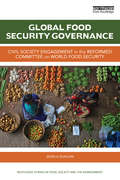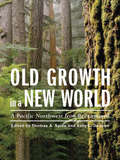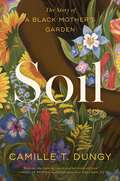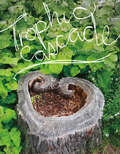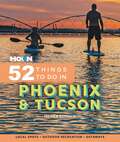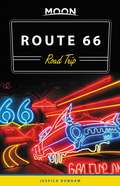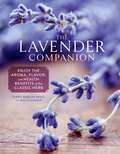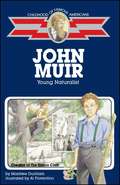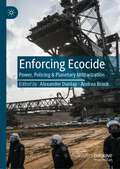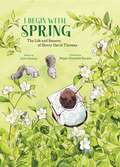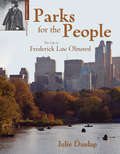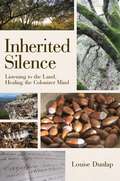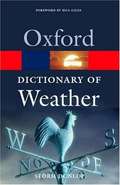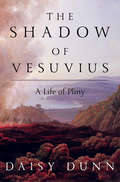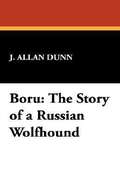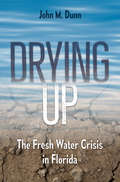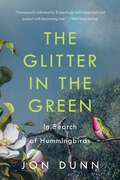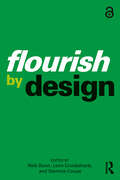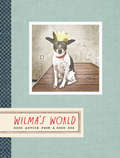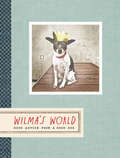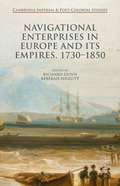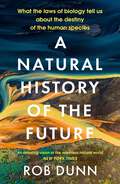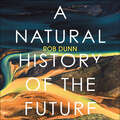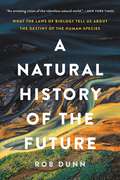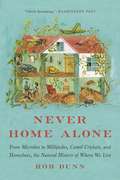- Table View
- List View
Global Food Security Governance: Civil society engagement in the reformed Committee on World Food Security (Routledge Studies in Food, Society and the Environment)
by Jessica DuncanIn 2007/8 world food prices spiked and global economic crisis set in, leaving hundreds of millions of people unable to access adequate food. The international reaction was swift. In a bid for leadership, the 123 member countries of the United Nations’ Committee on World Food Security (CFS) adopted a series of reforms with the aim of becoming the foremost international, inclusive and intergovernmental platform for food security. Central to the reform was the inclusion of participants (including civil society and the private sector) across all activities of the Committee. Drawing on data collected from policy documents, interviews and participant observation, this book examines the re-organization and functioning of a UN Committee that is coming to be known as a best practice in global governance. Framed by key challenges that plague global governance, the impact and implication of increased civil society engagement are examined by tracing policy negotiations within the CFS, in particular, policy roundtables on smallholder sensitive investment and food price volatility and negotiations on the Voluntary Guidelines on the Responsible Governance of Tenure of Land, Fisheries and Forests in the Context of National Food Security, and the Global Strategic Framework for Food Security and Nutrition. The author shows that through their participation in the Committee, civil society actors are influencing policy outcomes. Yet analysis also reveals that the CFS is being undermined by other actors seeking to gain and maintain influence at the global level. By way of this analysis, this book provides empirically-informed insights into increased participation in global governance processes.
Old Growth in a New World: A Pacific Northwest Icon Reexamined
by Sally L. Duncan Thomas A. SpiesOld-growth forests represent a lofty ideal as much as an ecosystem--an icon of unspoiled nature, ecological stability, and pristine habitat. These iconic notions have actively altered the way society relates to old-growth forests, catalyzing major changes in policy and management. But how appropriate are those changes and how well do they really serve in reaching conservation goals? Old Growth in a New World untangles the complexities of the old growth concept and the parallel complexity of old-growth policy and management. It brings together more than two dozen contributors--ecologists, economists, sociologists, managers, historians, silviculturists, environmentalists, timber producers, and philosophers--to offer a broad suite of perspectives on changes that have occurred in the valuing and management of old-growth forests in the Pacific Northwest over the past thirty years. The book * introduces the issues and history of old-growth values and conservation in the Pacific Northwest; * explores old growth through the ideas of leading ecologists and social scientists; * addresses the implications for the future management of old-growth forests and considers how evolving science and social knowledge might be used to increase conservation effectiveness. By confronting the complexity of the old-growth concept and associated policy and management challenges, Old Growth in a New World encourages productive discussion on the future of old growth in the Pacific Northwest and offers options for more effective approaches to conserving forest biodiversity.
Soil: The Story of a Black Mother's Garden
by Camille T DungyA &“heartfelt and thoroughly enriching&” (Aimee Nezhukumatathil, New York Times bestselling author of World of Wonders) work that expands on how we talk about the natural world and the environment as National Book Critics Circle finalist Camille T. Dungy diversifies her garden to reflect her heritage.In Soil: The Story of a Black Mother&’s Garden poet and scholar Camille T. Dungy recounts the seven-year odyssey to diversify her garden in the predominantly white community of Fort Collins, Colorado. When she moved there in 2013, with her husband and daughter, the community held strict restrictions about what residents could and could not plant in their gardens. In resistance to the homogenous policies that limited the possibility and wonder that grows from the earth, Dungy employs the various plants, herbs, vegetables, and flowers she grows in her garden as metaphor and treatise for how homogeneity threatens the future of our planet, and why cultivating diverse and intersectional language in our national discourse about the environment is the best means of protecting it. &“Brilliant and beautiful&” (Ross Gay, New York Times bestselling author of The Book of Delights), Soil functions as the nexus of nature writing, environmental justice, and prose to encourage you to recognize the relationship between the people of the African diaspora and the land on which they live, and to understand that wherever soil rests beneath their feet is home.
Trophic Cascade (Wesleyan Poetry Ser.)
by Camille T. DungyIn this fourth book in a series of award-winning survival narratives, Dungy writes positioned at a fulcrum, bringing a new life into the world even as her elders are passing on. In a time of massive environmental degradation, violence and abuse of power, a world in which we all must survive, these poems resonate within and beyond the scope of the human realms, delicately balancing between conflicting loci of attention. Dwelling between vibrancy and its opposite, Dungy writes in a single poem about a mother, a daughter, Smokin’ Joe Frazier, brittle stars, giant boulders, and a dead blue whale. These poems are written in the face of despair to hold an impossible love and a commitment to hope. A readers companion will be availabe at wesleyan.edu/wespress/readerscompanions.
Moon 52 Things to Do in Phoenix & Tucson: Local Spots, Outdoor Recreation, Getaways
by Jessica DunhamFrom that blues bar you haven&’t visited yet to the desert hike you keep meaning to plan, experience something new right here at home with Moon 52 Things to Do in Phoenix & Tucson.Cool things to do in and around the cities: Kick back at a Spring Training game or squeeze into the grandstands of El Gran Mercado for some lucha libre. Bike the famed Loop in Tucson, kayak Tempe Town Lake, and lace up your boots for an urban hike in the Phoenix Mountains. Support local BIPOC writers at Palabras Bilingual Bookstore and taste what&’s on tap at a women-owned brewery. Savor Sonoran-style food like tamales and carne asada or try authentic Tohono O&’odham fry bread Day trips and weekend getaways: Dip into hot springs or cool off in a secret swimming hole. Travel back in time in a ghost town or sip your way through wine country. Trek the Arizona Trail, hike the hoodoos at Chiricahua National Monument, pick saguaro fruit, and spend a night under the stars Experiences broken down by category: Find ideas for each season, activities for kids, outdoor adventures, learning about indigenous cultures, getting to know a new neighborhood, and more A local's advice: Whether it&’s a wilderness area or a beloved soul food spot, local author Jessica Dunham knows the ins and outs of Arizona Inspirational full-color photos throughout Easy-to-scan planning tips: Addresses and nearby spots, plus tips for avoiding the crowds if you're heading to a popular attraction What are you doing this weekend? Try something new with Moon 52 Things to Do in Phoenix & Tucson. About Moon Travel Guides: Moon was founded in 1973 to empower independent, active, and conscious travel. We prioritize local businesses, outdoor recreation, and traveling strategically and sustainably. Moon Travel Guides are written by local, expert authors with great stories to tell—and they can't wait to share their favorite places with you. For more inspiration, follow @moonguides on social media.
Moon Route 66 Road Trip (Travel Guide)
by Jessica DunhamMoon Route 66 Road Trip reveals the ins and outs of this iconic highway, from sweeping prairies and retro roadside pit-stops to the stunning vistas of the Southwest. Inside you'll find:Maps and Driving Tools: 38 easy-to-use maps detail the existing roads that comprise the original Route 66, along with site-to-site mileage, driving times, detailed directions for the entire route, and full-color photos throughoutEat, Sleep, Stop and Explore: With lists of the best hikes, bites, roadside curiosities, and more, you can admire extraordinary landscapes like Acoma Pueblo or Joshua Tree National Park, explore big cities like Los Angeles and Chicago, or wander abandoned ghost towns. Immerse yourself in classic Americana with outsider art and kitsch masterpieces, find the most Instagram-worthy retro motels, and sample the breadth of regional cuisine, from deep dish pizza to carne asadaFlexible Itineraries: Moon Route 66 Road Trip covers Illinois, Missouri, Kansas, Oklahoma, Texas, New Mexico, Arizona, and California. Drive the entire original Mother Road in two weeks, or follow strategic routes for shorter trips to Chicago, Los Angeles, St. Louis, Santa Fe, and the Grand Canyon, plus side trips to Taos, Las Vegas, Joshua Tree, and Santa MonicaExpert Perspective: Jessica Dunham has driven thousands of miles along the famed highway and provides cultural insight, insider tips, and critical history of the routePlanning Your Trip: Know when and where to get gas and how to avoid traffic, plus tips for driving in different road and weather conditions and suggestions for international visitors, LGBTQ travelers, seniors, road-trippers with kids, and accessibilityWith Moon Route 66 Road Trip's practical tips, detailed itineraries, and tried-and-true expertise, you're ready to fill up the tank and hit the road.Looking for more great American road trips? Try Moon Pacific Northwest Road Trip or Moon California Road Trip.
The Lavender Companion: Enjoy the Aroma, Flavor, and Health Benefits of This Classic Herb
by Jessica Dunham Terry Barlin VesciA celebration of lavender featuring stunning photographs; favorite recipes for the kitchen, pantry, and body care products; along with fascinating lore and gardening guidance from a destination lavender farm. Lavender has long been a favorite herb with its amazing, resinous fragrance; calming qualities; and unique flavor for seasoning food. This lavishly photographed celebration of the beloved herb, written by an acclaimed lavender farmer and cooking instructor, is brimming over with inspiration and ideas for bringing the fragrance and flavor of lavender into daily life. The book profiles the most popular lavender varieties and their recommended uses, along with the history, lore, and traditional medicinal uses. More than 40 recipes showcase lavender in delicious dishes from the kitchen as well homemade craft and body products. Tips for success with lavender in the garden complete this perfect gift for every lavender lover.
John Muir: Young Naturalist (Childhood of Famous Americans Series)
by Montrew DunhamA founding father of the conservation movement in the United States, John Muir was born in Scotland and emigrated to Wisconsin when he was eleven. This easy-to-read fictionalized biography takes a look at Muir's life as young naturalist, destined to become one of America's first eco-heroes.
Enforcing Ecocide: Power, Policing & Planetary Militarization
by Alexander Dunlap Andrea BrockPolicing and ecological crises – and all the inequalities, discrimination, and violence they entail – are pressing contemporary problems. Ecological degradation, biodiversity loss, and climate change threaten local communities and ecosystems, and, cumulatively, the planet as a whole. Police brutality, wars, paramilitarism, private security operations, and securitization more widely impact people – especially people of colour – and habitats. This edited collection explores their relationship, and investigates the numerous ways in which police, security, and military forces intersect with, reinforce, and facilitate ecological and climate catastrophe. Employing a case study-based approach, the book examines the relationships and entanglements between policing and ecosystems, revealing the intimate connection between political violence and ecological degradation.
I Begin with Spring: The Life And Seasons Of Henry David Thoreau
by Julie DunlapHorn Book Starred Review: An excellent introduction to Thoreau and the turbulent times in which he lived. School Library Journal Starred Review: An engaging and inspiring biographical title for budding scientists, artists, and environmentalists. Kirkus starred review: A marvelous life survey of a perennially relevant historical figure. One of Kirkus' Most Anticipated Children's Book of 2022 "A must read." - Elizabeth Bird, A Fuse 8 Production Formatted like a nature notebook, this exploration of seasonal changes in Thoreau’s day is also a visual story of his life and times and a gentle introduction to climate change. I Begin with Spring weaves natural history around Thoreau’s life and times in a richly illustrated field notebook format that can be opened anywhere and invites browsing on every page. Beginning each season with quotes from Thoreau’s schoolboy essay about the changing seasons, Early Bloomer follows him through the fields and woods of Concord, the joys and challenges of growing up, his experiment with simple living on Walden Pond, and his participation in the abolition movement, self-reliance, science, and literature. The book’s two organizing themes—the chronology of Thoreau’s life and the seasonal cycle beginning with spring—interact seamlessly on every spread, suggesting the correspondence of human seasons with nature’s. Thoreau’s annual records of blooms, bird migrations, and other natural events scroll in a timeline across the page bottoms, and the backmatter includes a summary of how those dates have changed from his day to ours and what that tells us about the science of phenology and climate change. Megan Baratta’s watercolors are augmented with historical images and reproductions of Thoreau’s own sketches to create a high-interest visual experience. The book includes a foreword from Thoreau scholar Jeffrey Cramer, Curator of Collections for the Walden Woods Project.
Parks for the People
by Julie DunlapWhen Frederick Law Olmsted entered a contest to design the nation's first city park, his winning design became New York's Central Park and forever changed our nation's cities. Using historic photographs and a school resource section, award-winning children's author Julie Dunlap brings Olmsted to life in this biography of the United States' first landscape architect.Julie Dunlap is a freelance writer and researcher. Dunlap's books have been honored with a Teachers' Choice Award from Learning magazine, a Parents' Choice recommended selection, and a Junior Library Guild selection, among others.
Inherited Silence: Listening to the Land, Healing the Colonizer Mind
by Louise DunlapAn insightful look at the historical damages early colonizers of America caused and how their descendants may recognize and heal the harm done to the earth and Indigenous peopleInherited Silence tells the story of beloved land in California’s Napa Valley—how the land fared during the onslaught of colonization and how it fares now in the drought, development, and wildfires that resulted from the colonial mind. Author Louise Dunlap’s ancestors were among the first Europeans to claim ownership of traditional lands of the Wappo people during a period of genocide. As settlers, her ancestors lived the dream of Manifest Destiny, their consciousness changing only gradually over the generations.When Dunlap’s generation inherited the land, she began to wonder about its unspoken past. What kept her ancestors from seeing and telling the truth of their history? What had they brought west with them from the very earliest colonial experience in New England? Dunlap looks back into California’s and America’s history for the key to their silences and a way to heal the wounds of the land, its original people, and the harmful mind of the colonizer.It’s a powerful story that will awaken others to consider their own ancestors’ role in colonization and encourage them to begin reparations for the destructive actions of those who came before. More broadly, it offers ways every reader can evaluate their own current life actions and the lasting impact they can have on society and our planet.
A Dictionary of Weather
by Storm DunlopAn authoritative and comprehensive dictionary of weather, forecasting, and climate terms with illustrative examples of specific events and extremes. Find out where and when the world's largest hailstone fell or where the highest temperature was recorded using the list of weather records, and check climate data for different weather types from around the world. Key terms from the related fields of oceanography, hydrology, and climatology are also covered as well as biographical information on important people in the development of meteorology. This is an essential reference source for both professional meteorologists as well as amateurs looking to increase their knowledge of the field.
The Shadow of Vesuvius: A Life Of Pliny
by Daisy Dunn“A wonderfully rich, witty, insightful, and wide-ranging portrait of the two Plinys and their world.”—Sarah Bakewell, author of How to Live When Pliny the Elder perished at Stabiae during the eruption of Vesuvius in 79 AD, he left behind an enormous compendium of knowledge, his thirty-seven-volume Natural History, and a teenaged nephew who revered him as a father. Grieving his loss, Pliny the Younger inherited the Elder’s notebooks—filled with pearls of wisdom—and his legacy. At its heart, The Shadow of Vesuvius is a literary biography of the younger man, who would grow up to become a lawyer, senator, poet, collector of villas, and chronicler of the Roman Empire from the dire days of terror under Emperor Domitian to the gentler times of Emperor Trajan. A biography that will appeal to lovers of Mary Beard books, it is also a moving narrative about the profound influence of a father figure on his adopted son. Interweaving the younger Pliny’s Letters with extracts from the Elder’s Natural History, Daisy Dunn paints a vivid, compellingly readable portrait of two of antiquity’s greatest minds.
Boru: The Story of an Irish Wolfhound (Famous Dog Stories)
by J. Allan DunnEscaping a circus, where he had been part of a dog act, the giant Irish Wolfhound ran wild, took as a mate a great white wolf, and became a freebooter, ranging the hills and plains of northwestern Montana. Based on a true story.
Drying Up: The Fresh Water Crisis in Florida
by John M. DunnAmerica’s wettest state is running out of water. Florida—with its swamps, lakes, extensive coastlines, and legions of life-giving springs—faces a drinking water crisis. Drying Up is a wake-up call and a hard look at what the future holds for those who call Florida home. Journalist and educator John Dunn untangles the many causes of the state’s freshwater problems. Drainage projects, construction, and urbanization, especially in the fragile wetlands of South Florida, have changed and shrunk natural water systems. Pollution, failing infrastructure, increasing outbreaks of toxic algae blooms, and pharmaceutical contamination are worsening water quality. Climate change, sea level rise, and groundwater pumping are spoiling freshwater resources with saltwater intrusion. Because of shortages, fights have broken out over rights to the Apalachicola River, Lake Okeechobee, the Everglades, and other important watersheds. Many scientists think Florida has already passed the tipping point, Dunn warns. Drawing on more than one hundred interviews and years of research, he affirms that soon there will not be enough water to meet demand if “business as usual” prevails. He investigates previous and current restoration efforts as well as proposed future solutions, including the “soft path for water” approach that uses green infrastructure to mimic natural hydrology. As millions of new residents are expected to arrive in Florida in the coming decades, this book is a timely introduction to a problem that will escalate dramatically—and not just in Florida. Dunn cautions that freshwater scarcity is a worldwide trend that can only be tackled effectively with cooperation and single-minded focus by all stakeholders involved—local and federal government, private enterprise, and citizens. He challenges readers to rethink their relationship with water and adopt a new philosophy that compels them to protect the planet’s most precious resource.
The Glitter in the Green: In Search of Hummingbirds
by Jon DunnAn acclaimed natural history writer follows the trail of the remarkable hummingbird all over the world. Hummingbirds are a glittering, sparkling collective of over three hundred wildly variable species. For centuries, they have been revered by indigenous Americans, coveted by European collectors, and admired worldwide for their unsurpassed metallic plumage and immense character. Yet they exist on a knife-edge, fighting for survival in boreal woodlands, dripping cloud forests, and subpolar islands. They are, perhaps, the ultimate embodiment of evolution's power to carve a niche for a delicate creature in even the harshest of places. Traveling the full length of the hummingbirds' range, from the cusp of the Arctic Circle to near-Antarctic islands, acclaimed nature writer Jon Dunn encounters birders, scientists, and storytellers in his quest to find these beguiling creatures, immersing us in the world of one of Earth's most charismatic bird families.
Flourish by Design
by Nick Dunn Leon Cruickshank Gemma CoupeFlourish by Design brings together a range of established and emerging voices in design research for a collection that provides original provocations on topics of global significance. It is an insightful guide to original theory and practice concerning how we can design for a better tomorrow. Featuring contributors from a diverse array of backgrounds and professions, this edited book explores the difference that design and design research can make for people, organisations, and the planet to prosper now and in the future. It offers a range of ideas and techniques through practical examples and ongoing projects showing how applied design research can respond to global challenges. Covering topics as diverse as artificial intelligence, bio-inspired materials, more-than-human design, sustainability, and urban acupuncture, it shares interdisciplinary and transdisciplinary design research not just to demonstrate what could be plausible in the near future but also to explain why it might be preferable. By sharing these despatches, this collection represents the very best of what design research can do, explaining how and why. This book is intended for a wide audience of professionals, scholars, and students in design, architecture, and public policy, as well as anyone who has an interest in how we design the world and, in turn, it designs us. The Open Access version of this book, available at www.taylorfrancis.com, has been made available under a Creative Commons Attribution-Non Commercial-No Derivatives (CC-BY-NC-ND) 4.0 license
Wilma's World: Good Advice from a Good Dog
by Rae DunnWelcome to Wilma's World, where life is full of joy and adventure lies around every corner. This charming book of photographs celebrates the wise insights of a special dog whose musings remind us to slow down and see the beauty in simple things. Wilma's handmade style and playful personality will inspire adventurous spirits everywhere.
Wilma's World: Good Advice from a Good Dog
by Rae DunnWelcome to Wilma's World, where life is full of joy and adventure lies around every corner. This charming book of photographs celebrates the wise insights of a special dog whose musings remind us to slow down and see the beauty in simple things. Wilma's handmade style and playful personality will inspire adventurous spirits everywhere.
Navigational Enterprises in Europe and its Empires, 1730–1850 (Cambridge Imperial and Post-Colonial Studies)
by Richard Dunn Rebekah HiggittNavigational Enterprises in Europe and its Empires, 1730–1850.
A Natural History of the Future: What the Laws of Biology Tell Us About the Destiny of the Human Species
by Rob DunnOver the past century, our species has made unprecedented technological innovations with which we have sought to control nature. From river levees to enormous one-crop fields, we continue to try to reshape nature for our purposes - so much so it seems we may be in danger of destroying it.In A Natural History of the Future, biologist Rob Dunn argues that nothing could be further from the truth: rather than asking whether nature will survive us, better to ask whether we will survive nature. Despite our best - or worst - efforts to control the biological world, life has its own rules, and no amount of human tampering can rewrite them. Elucidating several fundamental laws of ecology, evolution, and biogeography, Dunn shows why life cannot be stopped. We sequester our crops on monocultured fields, only to find new life emerging to attack them. We dump toxic waste only to find microbes to colonize it. And even in the London Tube, we have seen a new species of mosquito emerge to take advantage of an apparently inhospitable habitat. Life will not be repressed by our best-laid plans. Instead, Dunn shows us a vision of the biological future and the challenges the next generations could face.A Natural History of the Future sets a new standard for understanding the diversity of life and our future as a species.
A Natural History of the Future: What the Laws of Biology Tell Us About the Destiny of the Human Species
by Rob DunnA leading ecologist argues that if humankind is to survive on a fragile planet, we must understand and obey its iron laws.Over the past century, our species has made unprecedented technological innovations with which we have sought to control nature. From river levees to enormous one-crop fields, we continue to try to reshape nature for our purposes - so much so it seems we may be in danger of destroying it.In A Natural History of the Future, biologist Rob Dunn argues that nothing could be further from the truth: rather than asking whether nature will survive us, better to ask whether we will survive nature. Despite our best - or worst - efforts to control the biological world, life has its own rules, and no amount of human tampering can rewrite them. Elucidating several fundamental laws of ecology, evolution, and biogeography, Dunn shows why life cannot be stopped. We sequester our crops on monocultured fields, only to find new life emerging to attack them. We dump toxic waste only to find microbes to colonize it. And even in the London Tube, we have seen a new species of mosquito emerge to take advantage of an apparently inhospitable habitat. Life will not be repressed by our best-laid plans. Instead, Dunn shows us a vision of the biological future and the challenges the next generations could face.A Natural History of the Future sets a new standard for understanding the diversity of life and our future as a species.(P) 2022 Hachette Audio
A Natural History of the Future: What the Laws of Biology Tell Us about the Destiny of the Human Species
by Rob DunnA leading ecologist argues that if humankind is to survive on a fragile planet, we must understand and obey its iron lawsOur species has amassed unprecedented knowledge of nature, which we have tried to use to seize control of life and bend the planet to our will. In A Natural History of the Future, biologist Rob Dunn argues that such efforts are futile. We may see ourselves as life&’s overlords, but we are instead at its mercy. In the evolution of antibiotic resistance, the power of natural selection to create biodiversity, and even the surprising life of the London Underground, Dunn finds laws of life that no human activity can annul. When we create artificial islands of crops, dump toxic waste, or build communities, we provide new materials for old laws to shape. Life&’s future flourishing is not in question. Ours is.As ambitious as Edward Wilson&’s Sociobiology and as timely as Elizabeth Kolbert&’s The Sixth Extinction, A Natural History of the Future sets a new standard for understanding the diversity and destiny of life itself.
Never Home Alone: From Microbes to Millipedes, Camel Crickets, and Honeybees, the Natural History of Where We Live
by Rob DunnA natural history of the wilderness in our homes, from the microbes in our showers to the crickets in our basements <P><P>Even when the floors are sparkling clean and the house seems silent, our domestic domain is wild beyond imagination. In Never Home Alone, biologist Rob Dunn introduces us to the nearly 200,000 species living with us in our own homes, from the Egyptian meal moths in our cupboards and camel crickets in our basements to the lactobacillus lounging on our kitchen counters. You are not alone. <P><P>Yet, as we obsess over sterilizing our homes and separating our spaces from nature, we are unwittingly cultivating an entirely new playground for evolution. These changes are reshaping the organisms that live with us--prompting some to become more dangerous, while undermining those species that benefit our bodies or help us keep more threatening organisms at bay. <P><P>No one who reads this engrossing, revelatory book will look at their homes in the same way again.
